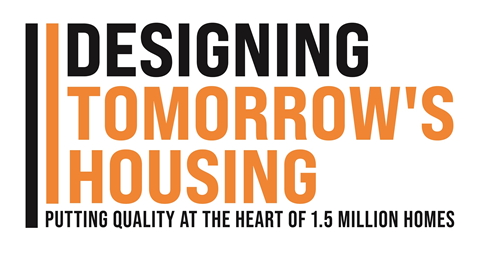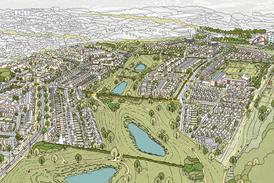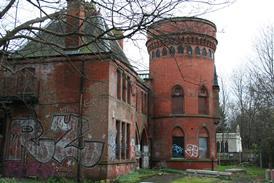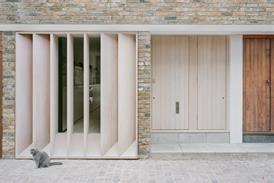On the day QOLF Consulting publishes its new report on the importance of post-occupancy evaluations in shaping design and placemaking, Emma Cooke sets out what residents say really matters — and why it should guide the homes of the future

We all know the UK faces some major housing challenges. We have a government and an industry with ambitions to deliver a huge number of new homes over the next few years. This is a fantastic place to be.
However, as the Designing Tomorrow’s Housing campaign rightly points out, there is a risk that this push for more homes creates tension between quantity and quality, that we end up making the age-old mistake of delivering a quantity of ‘units’ rather than quality places for people to live.
But what do we really mean when we talk about ‘quality’? Who decides what ‘good quality’ is, and how it might be incorporated into the new homes and neighbourhoods we hope to see delivered?
That’s where the Quality of Life Foundation’s Resident Reviews come in. A unique form of post-occupancy evaluation focused on homes and neighbourhoods, our Resident Reviews provide an in-depth, evidence-based picture of what quality means through the eyes of the people who actually live in the places we’re building.
And to us it’s clear: these are the voices we need to hear from when deciding how to embed quality into the delivery of 1.5 million new homes.
Successes borne out through lived experiences
So, what are residents telling us? Our Resident Reviews consistently show that when developers prioritise the human experience, the outcomes can enhance quality of life. A key finding in our new report synthesising the findings of our last three years of Resident Reviews is the profound impact of well-designed home interiors on health and wellbeing.
For example, at one development, 93% of residents were satisfied or very satisfied with their homes, frequently commenting on generous space standards, the provision of private outdoor space for every home, flexible layouts adapting to resident needs, and high-quality finishes reducing maintenance. These elements, along with optimised natural light and effective sound insulation, significantly contribute to resident satisfaction, peace, and comfort, proving that quality inside the home is just as critical as its external environment.
Beyond the home itself, a standout success has been the thoughtful integration of high-quality green and blue spaces within developments. Residents consistently rank these as their most appreciated local asset, with an impressive 94% of residents in the build-to-rent schemes we reviewed reporting positive mental health impacts from these natural areas.
>> Also read: Post-occupancy feedback should guide housing design, report urges
>> Also read: Architects, stop being shy: it’s time to learn from your buildings
As one resident beautifully articulated, “Being close to the canal and water… with fantastic views does calm me and helps me to relax after a difficult week.” These spaces provide crucial opportunities for stress reduction, physical activity, and social interaction, confirming their vital role in creating healthier, more appealing neighbourhoods.
We’ve also observed how well-planned developments can be effective at fostering community cohesion. Through accessible shared spaces and active management, such as welcoming new residents, establishing clear communication channels, and supporting residents to organise their own activities, a powerful sense of belonging is cultivated, demonstrating how intentional design decisions can truly build strong, resilient communities.
Persistent challenges from the resident perspective
Of course, asking people what they think also throws up plenty of opportunities for learning. Our reviews have not just shown the positive feedback, they’ve also highlighted what can be improved.

A recurring theme centres on the need for better integration of essential facilities or services and public transport. Residents frequently report frustrations when services and reliable transport links are not established, particularly in the earlier phases of multi-phase developments. This often leaves them feeling overly reliant on cars, which is compounded by perceptions of car dominance within neighbourhoods.
For instance, 61.9% of residents in one development agreed that cars take up too much space on the street, with some feeling that existing rules are not followed or enforced. Furthermore, while green spaces are highly valued, residents often express a desire for more consistent and clearly communicated maintenance, sometimes feeling that service charges don’t reflect the upkeep of these vital communal areas.
Our findings also show gaps in providing diverse recreational facilities, especially for underserved groups like teenagers and young adults. Traditional play parks often fall short, leading to a lack of engaging spaces for older youth and limiting opportunities for broader social engagement within the community.
Addressing these common frustrations is not simply about ticking boxes, it’s about ensuring developments can evolve into equitable and self-sufficient neighbourhoods that enhance the quality of life for all residents, and for the long term.
From insights to actionable design
The true value of these insights comes when we learn from them, when we understand what’s worked and what hasn’t, and we apply that learning to either the next phase of a development or when designing the places of the future. Listening to residents in this way can help developers, urban designers, architects and planners to anticipate design issues, strengthen their market offering by knowing what it is that customers value, and reduce long term risks associated with unsuccessful developments.
Our Resident Reviews highlight crucial lessons for embedding quality through responsive design from the outset, both within individual homes and across entire neighbourhoods. Lessons from lived experience can inform everything from internal layouts and the optimisation of natural light within homes, to how streetscapes are designed and green spaces are integrated within a masterplan.
Designing tomorrow’s housing
Designing truly high-quality, sustainable housing demands a continuous feedback loop, enabling learning from the lived experiences of residents. Our Resident Reviews consistently demonstrate that embedding design that centres on residents’ needs isn’t just a good idea, it’s a practical necessity if we’re to meet our housing targets without compromising on quality.
By actively listening to the people who call these places home, we unlock invaluable insights that can profoundly shape how we plan, design, and manage our built environment. This commitment to understanding and responding to lived experience is how we will create genuinely thriving communities for tomorrow.
The housing brief: embedding design in national delivery

Housing is an undeniable priority for the UK with renewed government focus putting it at the top of the agenda - but he big question is how do we ensure quality while driving for quantity?
Building Design’s new campaign Designing Tomorrow’s Housing will investigate how the delivery of 1.5 million new homes can be reconciled with maintaining high design standards.
Rather than simply reporting on figures and planning reforms, this campaign will delve into the challenges and opportunities of integrating exceptional design, robust planning standards, and sustainable placemaking into the mass housebuilding process.
We know that design and housing professionals come up against these issues in their everyday working lives, which is why we want to hear from you - our readers - about your experiences.
Click here to read more about the campaign
Postscript
Emma Cooke is head of external affairs at the Quality of Life Foundation.
















No comments yet